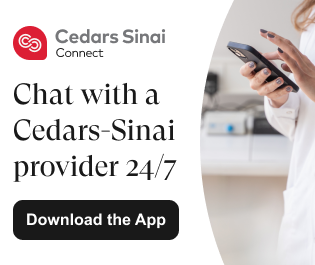Cedars-Sinai Blog
Pairs That Share
Aug 07, 2020 Cedars-Sinai Staff

Olufunke Ojuri hardly told anyone when she learned she was sick. Not even her siblings.
Eventually, she couldn't hide it anymore.
"When she finally told me, she'd had chronic kidney disease for about 20 years," says her sister Sope, 29." It was very hard news. She was on a wait list for a new kidney from a deceased donor, and in Los Angeles the wait was eight years."
"Things can be beautiful even if life goes in a direction you didn't expect."
That conversation was the start of a remarkable journey, one that changed the lives of both women—and the lives of six other people they had never met.
A life-changing decision
While Olufunke was waiting for an organ, her nephrologist told her she had to begin dialysis.
"My sister was determined to keep traveling and working, so she put it off until she had no choice," Sope says.
Olufunke scheduled her sessions in the evenings after work.
"She'd go three times every week, from 6 to 9:30 p.m," Sope recalls. "I didn't want my sister to spend the next eight years like this."
Finally, Sope started looking into giving her sister one of her own kidneys.
Sope has another sister who is a doctor, so she started by talking to her. Sope came away feeling sure this was what she wanted to do. Another doctor confirmed she was a match. But Olufunke was apprehensive.
"She was worried that I was too young and that kidney donation could affect me negatively," Sope says. "I told her there is no guarantee of anything in life, and I could handle it."
Disappointment and hope
The challenges had not yet begun. It turned out Olufunke had a hernia and needed a nephrectomy. After that operation she needed a blood transfusion, which changed the antibodies in her blood.
"I was suddenly no longer a match," Sope says. "It was absolutely heartbreaking."
A nurse at Cedars-Sinai named Alex told them about the Kidney Paired Donation Program. Sope and Olufunke had dozens of questions.
"Alex was amazing," Sope says. "She was patient, kind and knowledgeable. We decided to do it. It was my sister's best chance for healing, and she'd be no worse off if it didn't work."
A paired exchange works like this: Donor A wants to donate a kidney to Patient A, but they are not a match. Donor B wants to donate a kidney to Patient B, but they are not a match either. But Donor A is a match with Patient B, and Donor B is a match with Patient A. This paired exchange can then be arranged. Exchanges can include a large number of people, not just two, and everyone has to agree to move forward.
The next few months were challenging. Olufunke had to go through immunotherapy to prepare for the transplant, and often she felt sick.
"She was almost ready to give up," Sope says.
Finally, on the fourth try, they found the right group, consisting of eight people.
A new leaf
In the last days before the operation, Sope reflected on the magnitude of what was about to happen.
"Because we were part of the Kidney Paired Donation Program, this wasn't just about me and my sister," she says. "This was about the lives of six other people. It felt so monumental."
The morning of the procedure, Sope took the last packages for her online store to the post office because she knew she wouldn't be able to go for at least six weeks.
The transplant was a success. Sope credits the staff at Cedars-Sinai.
"They cared about how we were feeling and really supported us," she says. "Dr. Irene Kim, who performed the operation, was incredible. Our social worker, Lisa, made sure we had any resources we needed."
A few months later, Olufunke was back at work.
"She's fine now," says Sope, who was off work for six weeks for her own recovery.
The experience transformed her.
"I had to learn to let go of what I cannot control," she says. "Things can be beautiful even if life goes in a direction you didn't expect."
More than anything, Sope wants people to know that the Kidney Paired Donation Program is safe, well-designed and can significantly reduce wait times and save lives.
"Don't be afraid to explore it just because you hadn't heard of it before," she says.


